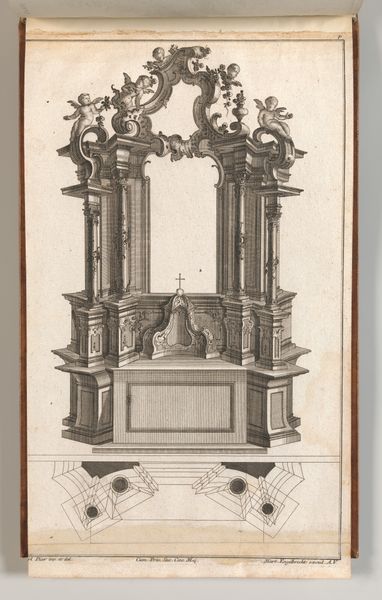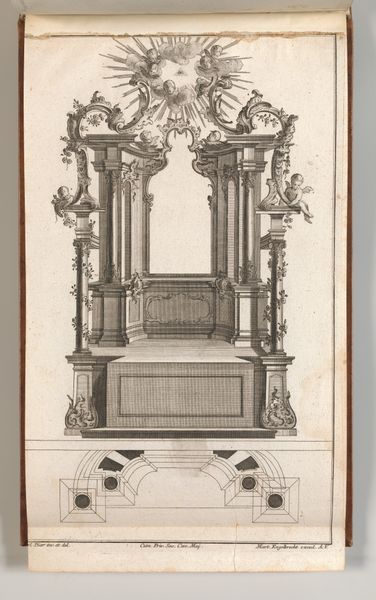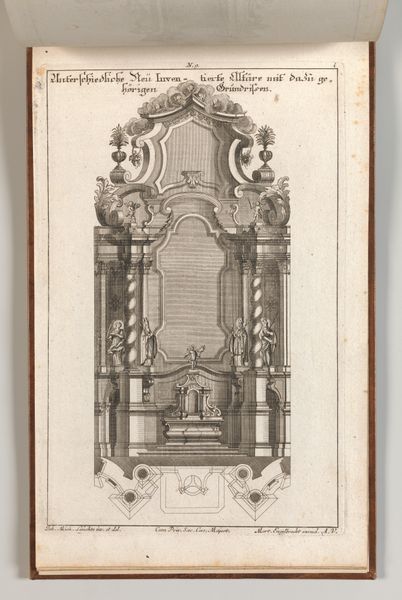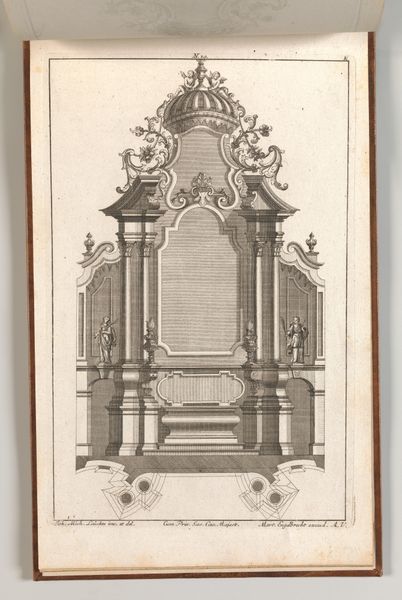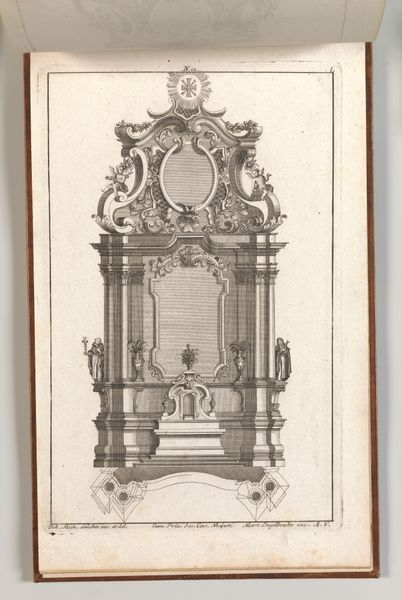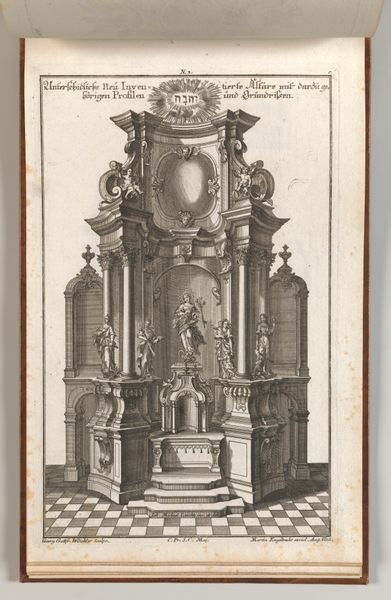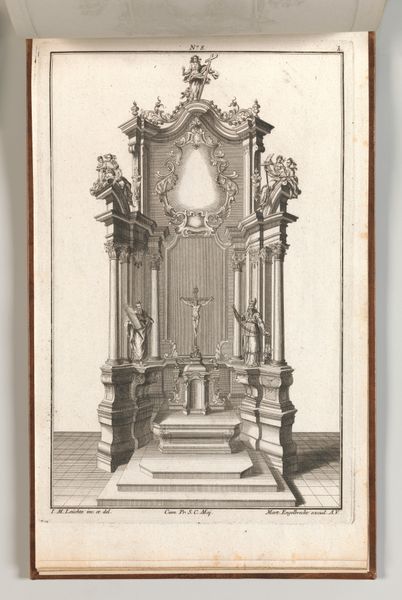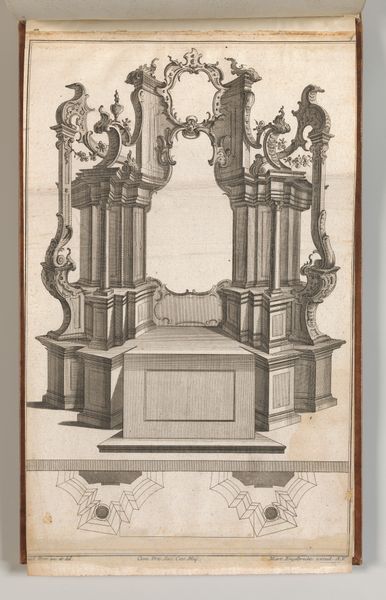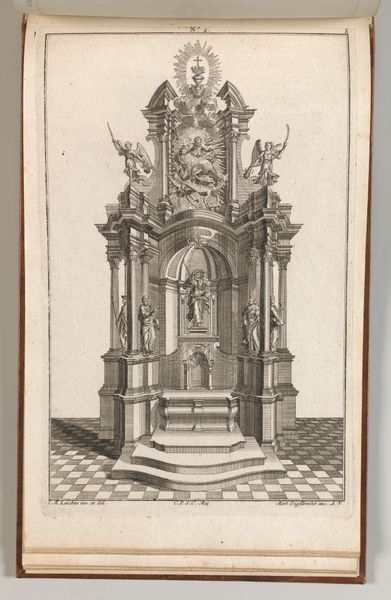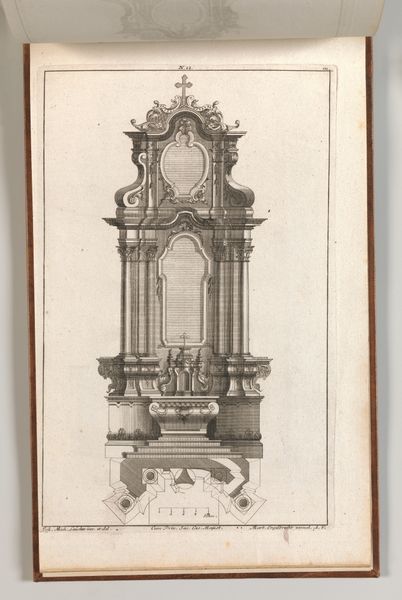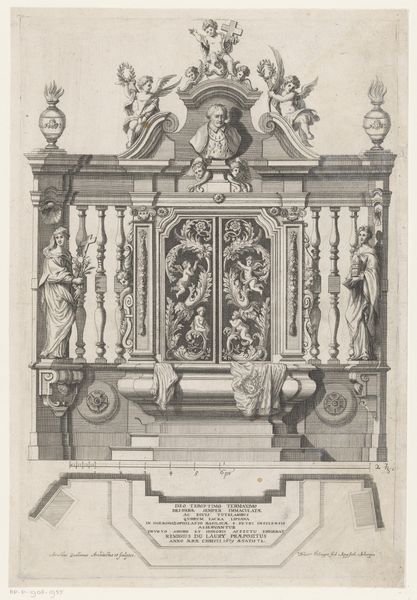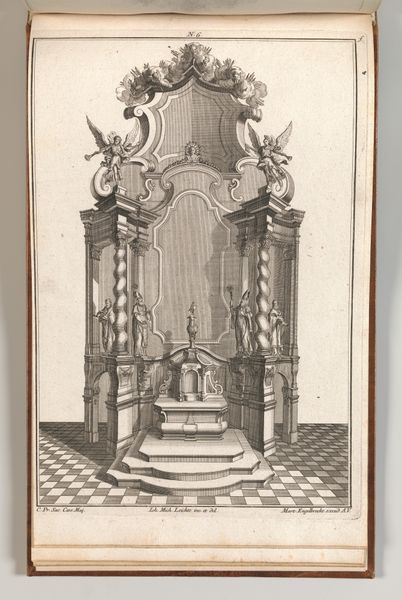
Design for a Monumental Altar, Plate n from 'Unterschiedliche Neu Inventierte Altäre mit darzu gehörigen Profillen u. Grundrißen.' 1745 - 1755
0:00
0:00
drawing, print, engraving, architecture
#
drawing
#
baroque
# print
#
engraving
#
architecture
Dimensions: Overall: 8 7/16 × 13 3/4 in. (21.5 × 35 cm)
Copyright: Public Domain
Curator: What we have here is “Design for a Monumental Altar,” one plate from Carl Pier’s series, “Unterschiedliche Neu Inventierte Altäre,” dating roughly from 1745 to 1755. The medium is engraving, typical of the period, rendered with impressive detail. Editor: Immediately, the theatricality jumps out. It's baroque excess distilled into black and white; a stage set for… well, something truly heavenly, judging by those chubby cherubs at the top. Curator: Pier really leans into the dramatic flourishes typical of the baroque style, doesn’t he? But I find myself considering the logistics of such an altar. How heavy would all of that stone be? Where would the stone come from? Who were the artisans who could execute something like this, so over the top, and where are they memorialized? Editor: All fair points! And behind the elaborate facade there is...emptiness. Like an ornate cage waiting for the divine bird to flutter in. Perhaps Pier saw his role as not merely an architect, but an impresario of spiritual space, carefully managing the visual drama of faith. I like the inclusion of technical drawings, it's useful for artisans and others. Curator: He gives us both the spectacle and a potential plan to make this dream real, a clever move by Pier that makes me think of the engravers and their often overlooked contribution in translating architecture to paper. This makes its wide circulation much easier, which should also be remembered! Editor: Absolutely. And let's not forget the cultural and religious currents flowing through 18th-century Europe at this time. Grandiosity wasn't just for aesthetics; it was a way of asserting power, of showcasing wealth, and inspiring piety, which could mean social and religious control. Each material tells its own history of extraction, transportation, and refinement, which speaks volumes. Curator: And to me this all underscores a feeling: hope and transformation. Look at how the clouds swirling up support those beaming children. I like how the details of this architectural drawing manage to invite so much feeling, even to someone outside the culture for which it was intended. I could dream in this architecture for quite some time. Editor: I agree. There's something undeniably hopeful, even transcendent, in Pier's meticulous lines. Thanks for offering a vision to look towards; there’s a lot here to appreciate about craftsmanship and its broader implications for shaping our material and spiritual realities.
Comments
No comments
Be the first to comment and join the conversation on the ultimate creative platform.
